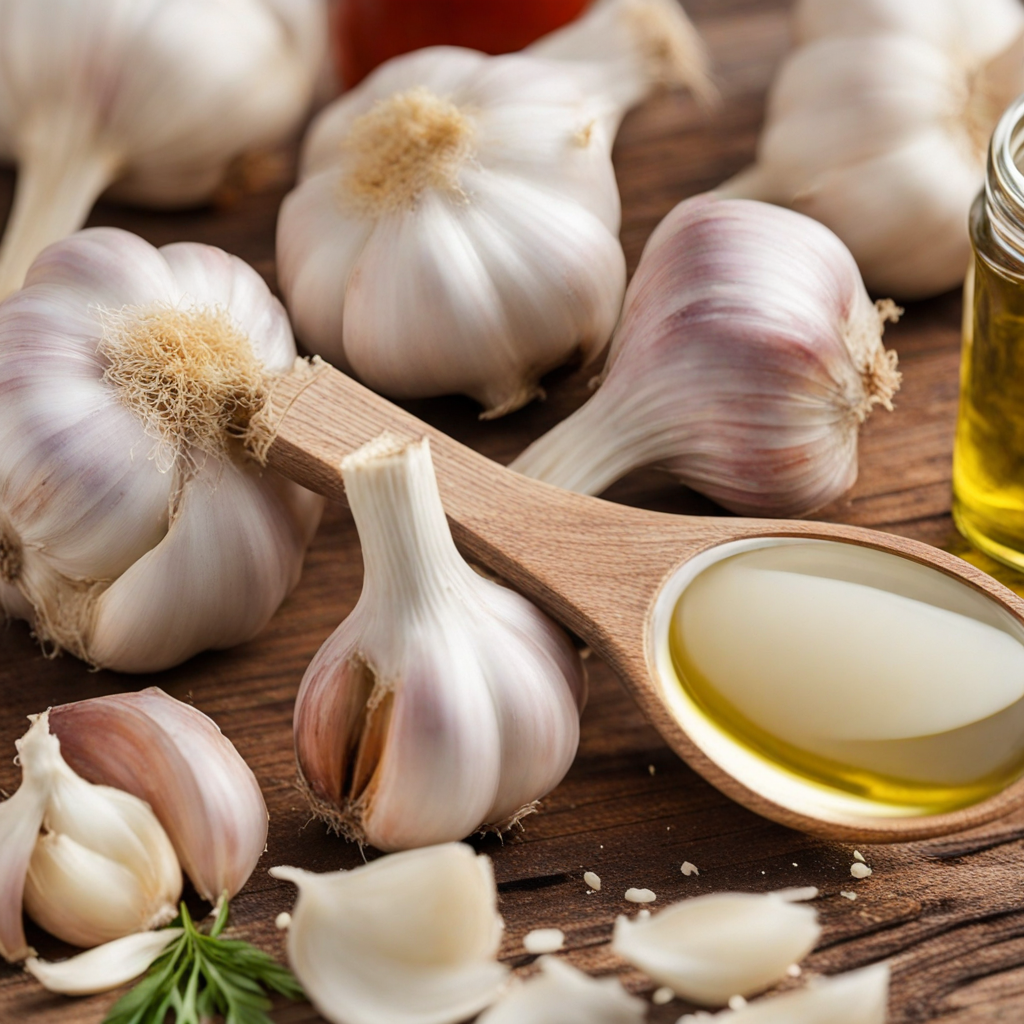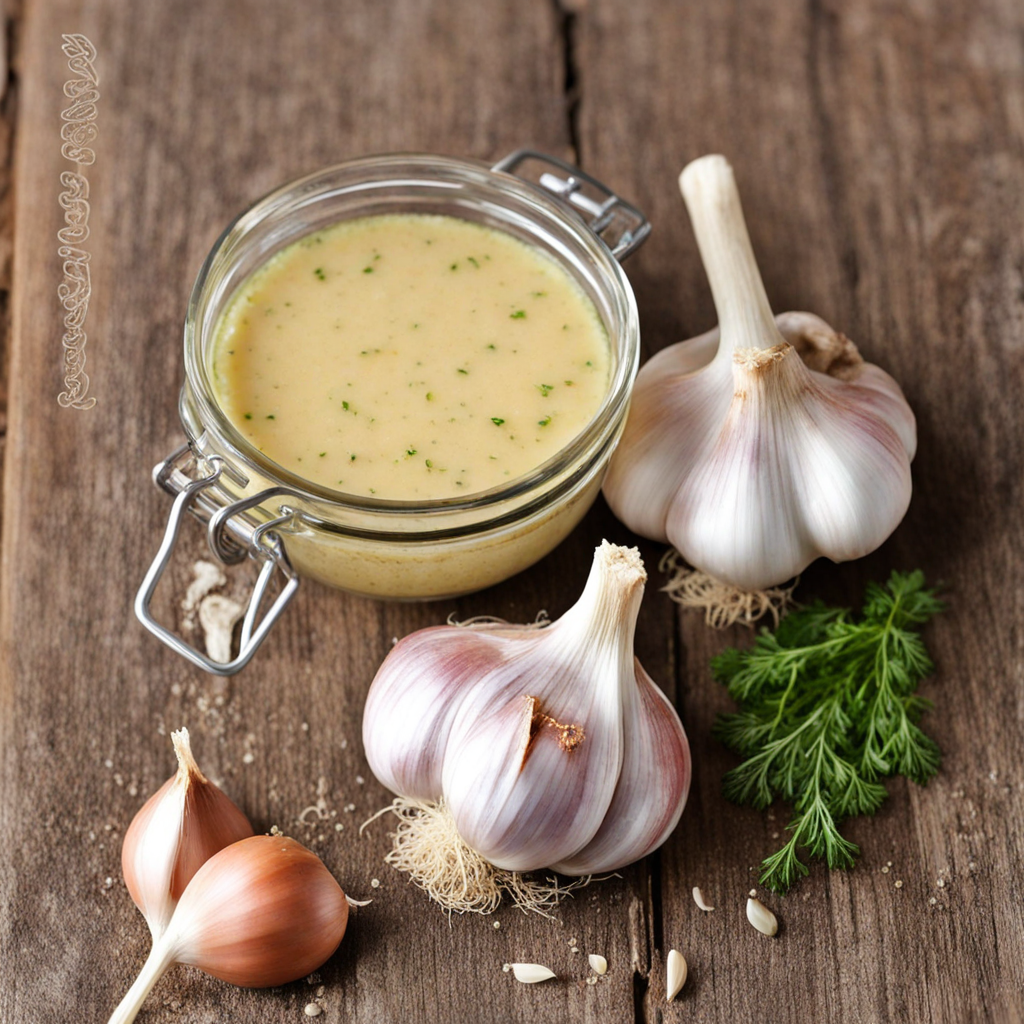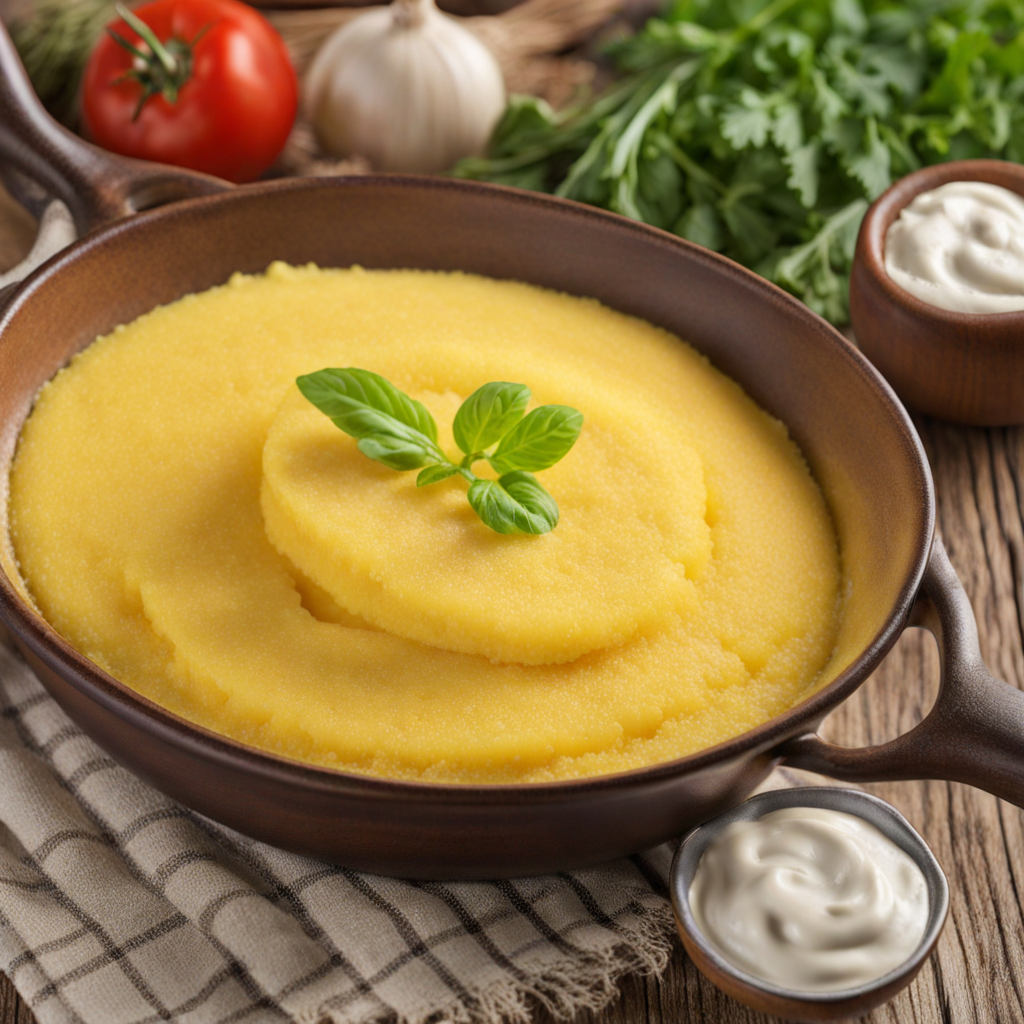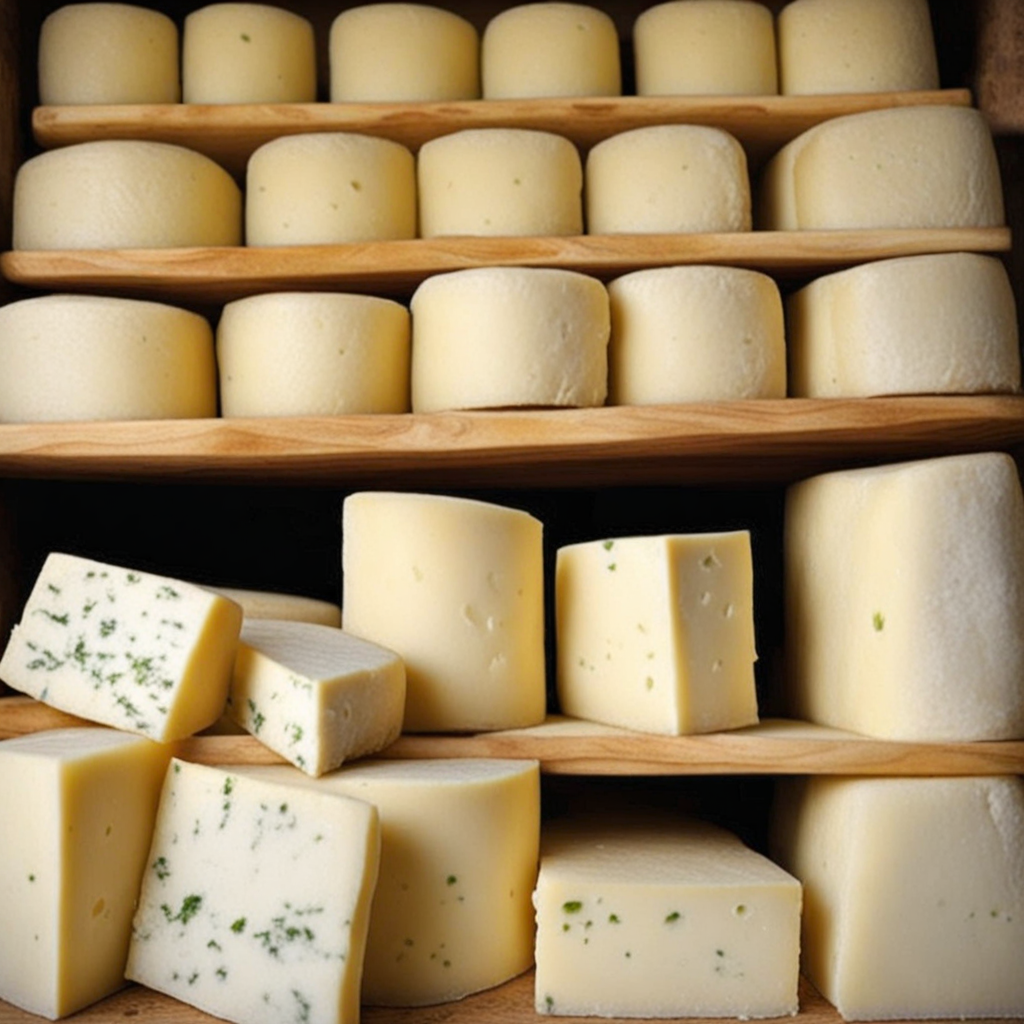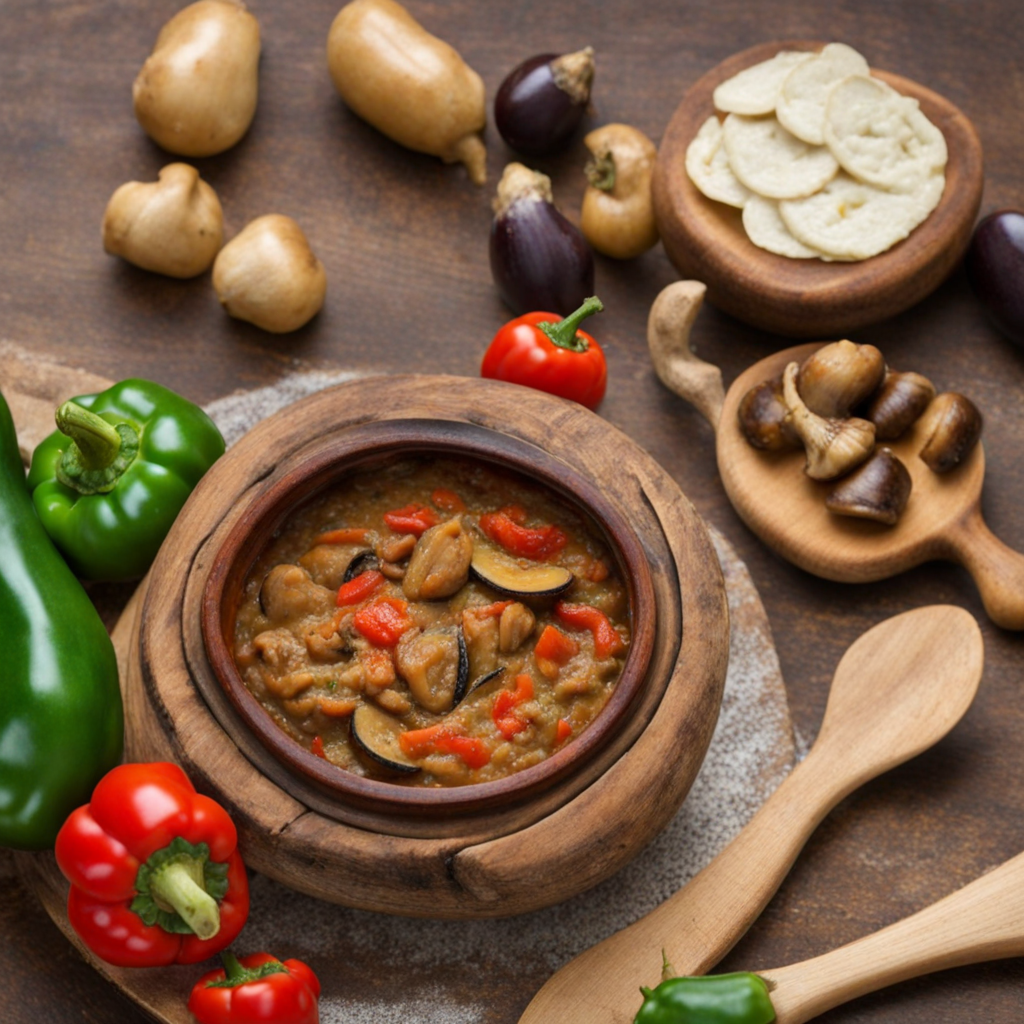Garlic Sauce
Garlic Sauce, known as "sos de usturoi" in Romania, is a bold and flavorful condiment that showcases the country's love for garlic. This creamy sauce is typically made by combining crushed garlic cloves with a base of mayonnaise or sour cream, resulting in a rich and velvety texture. The pungent aroma of fresh garlic is beautifully balanced by the creaminess of the sauce, making it an irresistible addition to a variety of dishes. The flavor profile is robust, delivering a delightful punch that awakens the palate and adds depth to any meal. In Romanian cuisine, Garlic Sauce is often served alongside grilled meats, roasted vegetables, and traditional dishes like mămăligă (cornmeal porridge) and various fish preparations. Its versatility allows it to be used as a dipping sauce for bread or a spread for sandwiches, enhancing the overall eating experience with its zesty kick. The sauce not only elevates the taste of the food but also embodies the rustic charm of Romanian culinary traditions, where garlic is a staple ingredient celebrated for its flavor and health benefits. The preparation of Garlic Sauce can vary, with some recipes incorporating additional ingredients like lemon juice, herbs, or even a hint of chili for those who enjoy a spicy twist. This adaptability makes it a go-to option for home cooks looking to experiment with flavors while staying true to Romanian heritage. Whether enjoyed in a traditional setting or as a modern accompaniment, Garlic Sauce invites food lovers to explore the rich, savory world of Romanian gastronomy.
How It Became This Dish
The History of Mujdei: Romania's Garlicky Treasure #### Origins Mujdei, a traditional Romanian condiment, epitomizes the country's rich culinary heritage with its bold flavors and historical roots. The name "mujdei" likely derives from the Slavic word "mujd," which refers to a mixture or a blend, hinting at its nature as a versatile sauce. This potent garlic sauce is primarily made from crushed garlic, salt, vinegar, and water, resulting in a pungent, aromatic paste that enhances a wide array of dishes, particularly meats, fish, and vegetables. Garlic itself has deep historical significance not only in Romania but also across various ancient civilizations. Archaeologists have traced the use of garlic back to the ancient Egyptians, who revered it for both its culinary and medicinal properties. Garlic was consumed by laborers building the pyramids, as it was believed to provide strength and endurance. The ancient Greeks and Romans also prized garlic, associating it with vigor and vitality. In Romanian folklore, garlic is considered a protective ingredient, believed to ward off evil spirits and safeguard against illness. #### Cultural Significance Mujdei is more than just a condiment; it is a symbol of Romanian identity and culinary tradition. In rural areas, where agriculture flourished, garlic was commonly grown in gardens, making it an accessible ingredient for many households. Mujdei became a staple in peasant kitchens, embodying the resourcefulness of Romanian cooking. The simplicity of its ingredients reflects the agricultural lifestyle of the Romanian people, who relied on what they could cultivate or forage. In Romanian culture, food is often a focal point of social gatherings and family celebrations. Mujdei is frequently served during festive occasions, such as weddings and holidays, where it accompanies traditional dishes like grilled meats or polenta. The sauce brings people together, enhancing the communal experience of sharing a meal. The pungent aroma of mujdei fills the air at family feasts, evoking nostalgia and memories tied to home-cooked meals. Additionally, mujdei has a place in Romanian folklore and superstition. Garlic's association with protection extends to mujdei, which is sometimes used in rituals to ward off negative energy. During certain celebrations, it is common to see dishes adorned with fresh garlic or mujdei as a symbol of health, prosperity, and protection against malevolent forces. #### Development Over Time As Romania evolved through historical challenges, including invasions, wars, and political changes, so too did its culinary practices. Mujdei has undergone transformations while retaining its core essence. In the past, the preparation of mujdei was a labor-intensive process. Fresh garlic cloves were manually crushed with salt in a mortar and pestle, releasing their pungent oils. The addition of vinegar or water helped to create a paste that could be easily spread or drizzled over dishes. With the advent of modern kitchens and culinary conveniences, the preparation of mujdei has become less labor-intensive. Today, many Romanians still prefer the traditional method of making mujdei by hand, appreciating the authenticity and depth of flavor that comes from the fresh garlic. However, the availability of pre-made garlic sauces and pastes in grocery stores reflects a broader trend of modernization in food preparation. Furthermore, the globalization of cuisine has led to a fusion of flavors and culinary styles. Mujdei has found its way into contemporary Romanian restaurants, where chefs experiment with traditional recipes. Some variations have emerged, incorporating additional ingredients such as lemon juice, herbs, or even yogurt to create new interpretations of this beloved sauce. These adaptations highlight the adaptability of mujdei while respecting its historical roots. #### Mujdei in Modern Romanian Cuisine In modern Romanian cuisine, mujdei continues to hold a revered place, often paired with grilled meats like mici (grilled sausages) or fried fish. It serves as a zesty accompaniment that enhances the natural flavors of the dish. The spreadability of mujdei makes it a convenient condiment for sandwiches and wraps, bridging the gap between traditional and contemporary dining experiences. The resurgence of interest in traditional foods and farm-to-table movements has also spurred a renewed appreciation for mujdei. Culinary enthusiasts and home cooks are rediscovering the joy of making mujdei from scratch, valuing the simplicity of the ingredients and the rich flavor it imparts to meals. Workshops and culinary classes focused on Romanian cuisine often include mujdei in their curricula, teaching participants about its history and preparation methods. #### Conclusion Mujdei is a testament to Romania's culinary history, reflecting the resilience and creativity of its people. From its ancient origins and cultural significance to its development over time, mujdei encapsulates the flavors and traditions that define Romanian cuisine. As the world becomes increasingly interconnected, this garlicky treasure continues to thrive, bridging generations and cultures through its bold taste and rich history. In a time of rapid change and globalization, mujdei stands as a reminder of the importance of preserving culinary traditions. It invites us to explore the past while enjoying the present, celebrating the flavors that make us feel at home. Whether served at a festive gathering or enjoyed in the comfort of one's kitchen, mujdei remains a cherished symbol of Romanian heritage, inviting all to savor its delightful, garlicky essence.
You may like
Discover local flavors from Romania


